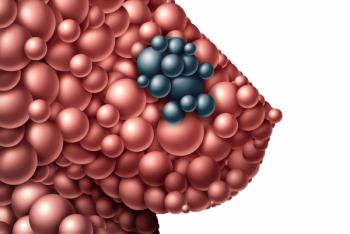
- ONCOLOGY Vol 25 No 10
- Volume 25
- Issue 10
Cancer-Related TTP and Considerations of Plasma Exchange
The diagnosis and therapy of thrombotic thrombocytopenic purpura (TTP) have advanced dramatically in the past 25 years, with increasing diagnostic awareness spurred on by the discovery of plasma exchange as an effective therapy.
The diagnosis and therapy of thrombotic thrombocytopenic purpura (TTP) have advanced dramatically in the past 25 years, with increasing diagnostic awareness spurred on by the discovery of plasma exchange as an effective therapy. Rarely is the pentad of thrombocytopenia, anemia, renal dysfunction, neurologic dysfunction, and fever present before the diagnosis is made, and now any time that thrombocytopenia is accompanied by an elevated lactate dehydrogenase (LDH) level, TTP is high on the list of possible etiologies. Although reviews find neurologic signs to be common,[1] the question of whether the diagnosis is TTP is often raised in the setting of just thrombocytopenia and elevated LDH. Dr. George emphasizes an important group presenting with overlapping signs and symptoms: patients with new or recurrent malignancy.[2]
Apheresis unit directors are regularly faced with requests for plasma exchange in the first hour or two of patient admission, and an important question needs to be raised, as indicated by Dr. George: Is this intervention more likely to help or to hurt? Much has been learned about the pathogenesis of TTP. However, ADAMTS13 assay results are available in a time frame somewhat longer than the time required to obtain CBC results (usually 10 days at any institution that has to send the test to a reference laboratory), and they are not 100% sensitive,[3] requiring a decision to treat that is based on clinical evidence.
As Dr. George notes, the risks of plasma exchange are too often minimized or ignored, although they are largely associated with the placement, presence, or malfunction of a central line. Before placement of a central line and while the diagnosis is being established and alternatives are being excluded, an initial plasma exchange often can be accomplished by peripheral vein access. Although a prolonged course of 15 or 20 plasma exchanges is not practical without central access, the potentially fatal complications (recent death of a stem cell donor in South America during internal jugular line placement) may largely be avoided until the longer-term need can be established. An alternative is to not begin plasma exchange until additional diagnostic studies are performed, but this raises concerns about the onset of renal failure or seizures, both of which can occur even with immediate institution of plasma exchange.
Elliott et al[4] delineated the significant symptoms of bone pain and respiratory symptoms as clues to potential underlying carcinoma causing thrombotic microangiopathy (TMA). In the heat of diagnostic pursuit, such symptoms can be thought to be related to bone infarcts and potentially to pulmonary embolism, thrombotic events potentially caused by TMA. Severe pulmonary insufficiency is actually uncommon in TTP, so the presence of significant hypoxia or dyspnea should cause the diagnosis of TTP to be questioned.[3] With the survival of cancer patients increasing, the number of potential patients with TMA who have a history of cancer increases, and the knowledge that cancer can recur well beyond 5 years after remission makes the possibility of cancer as a cause proportionately more likely.
The Oklahoma Registry has yielded many invaluable insights under the nourishment of Dr. George.[5] However, we must be careful to understand the differences between a registry with controlled input and the presentations in all clinical settings. Also, recognition of TMA, whether it is associated with TTP or malignancy, may be treated appropriately with plasma exchange while the diagnosis is being made.
After stem cell transplantation, transplant-associated TMA (TA-TMA) has been defined as red cell fragmentation, increased LDH above baseline, renal or neurologic dysfunction, a creatinine level at least twice that of baseline, and negative Coombs test results.[6] A challenge is how to delineate TA-TMA from an autoimmune TTP, which might occur as part of autoimmune-type events in chronic graft-vs-host disease. As it turns out, even very late TA-TMA usually is not associated with low ADAMTS13 levels. Complicating this, however, is the fact that some patients appear to respond to plasma exchange, although sometimes not until 12 or more plasma exchanges have occurred.
So, without an immediate ADAMTS13 level and concomitant inhibitor assay, in those hours while the diagnosis of TTP is being distinguished from other imitators, including infection and malignancy-associated MA,[7] an immediate initiation of potentially course-altering plasma exchange should be pursued, with the first option of peripheral access for the initial two or three procedures, to gain potentially valuable therapeutic benefits while minimizing the risks of central access.
Financial Disclosure:The author has no significant financial interest or other relationship with the manufacturers of any products or providers of any service mentioned in this article.
References:
References
1. George JN. How I treat patients with thrombotic thrombocytopenic purpura. Blood. 2010;116:4060-9.
2. George JN. Systemic malignancies as a cause of unexpected microangiopathic hemolytic anemia and thrombocytopenia. Oncology (Williston Park). 2011;25:XXX-XXX.
3. Hovinga JA, Vesely SK, Terrell DR, et al. Survival and relapse in patients with thrombotic thrombocytopenic purpura. Blood. 2010;115:1500-11.
4. Elliott MA, Letendre L, Gastineau DA, et al. Cancer-associated microangiopathic hemolytic anemia with thrombocytopenia: an important diagnostic consideration. Eur J Haematol. 2010;85:43-50.
5. George JN. Thrombotic thrombocytopenic purpura: a syndrome that keeps evolving. J Clin Apher. 2004;19:63-5.
6. Ho VT, Cutler C, Carter S, et al. Blood and marrow transplant clinical trials network toxicity committee consensus summary: thrombotic microangiopathy after hematopoietic stem cell transplantation. Biol Blood Marrow Transplant. 2005;11:571-5.
7. George JN. The thrombotic thrombocytopenic purpura and hemolytic uremic syndromes: overview of pathogenesis (Experience of The Oklahoma TTP-HUS Registry, 1989-2007). Kidney Int Suppl. 2009;112:S8-S10.
Articles in this issue
over 14 years ago
Cytoreductive Surgery for Advanced Ovarian Cancer: Quo Vadis?over 14 years ago
Bladder Cancer: Imperatives for Personalized Medicineover 14 years ago
Controversies in the Management of Advanced Ovarian Cancerover 14 years ago
Ginkgo (Ginkgo biloba)Newsletter
Stay up to date on recent advances in the multidisciplinary approach to cancer.





